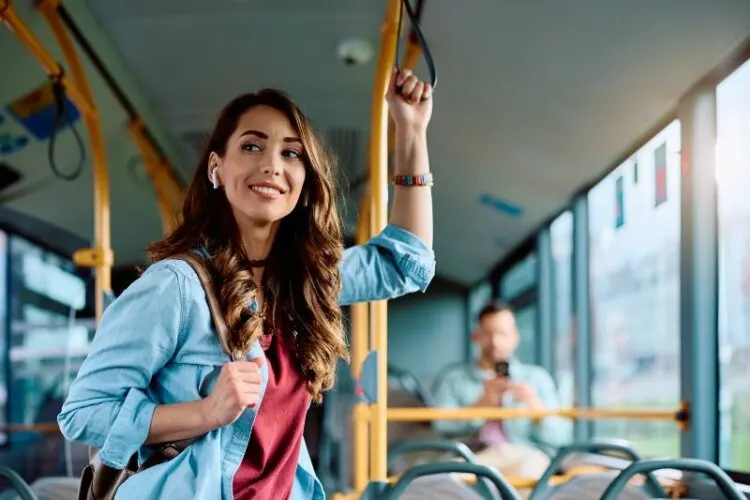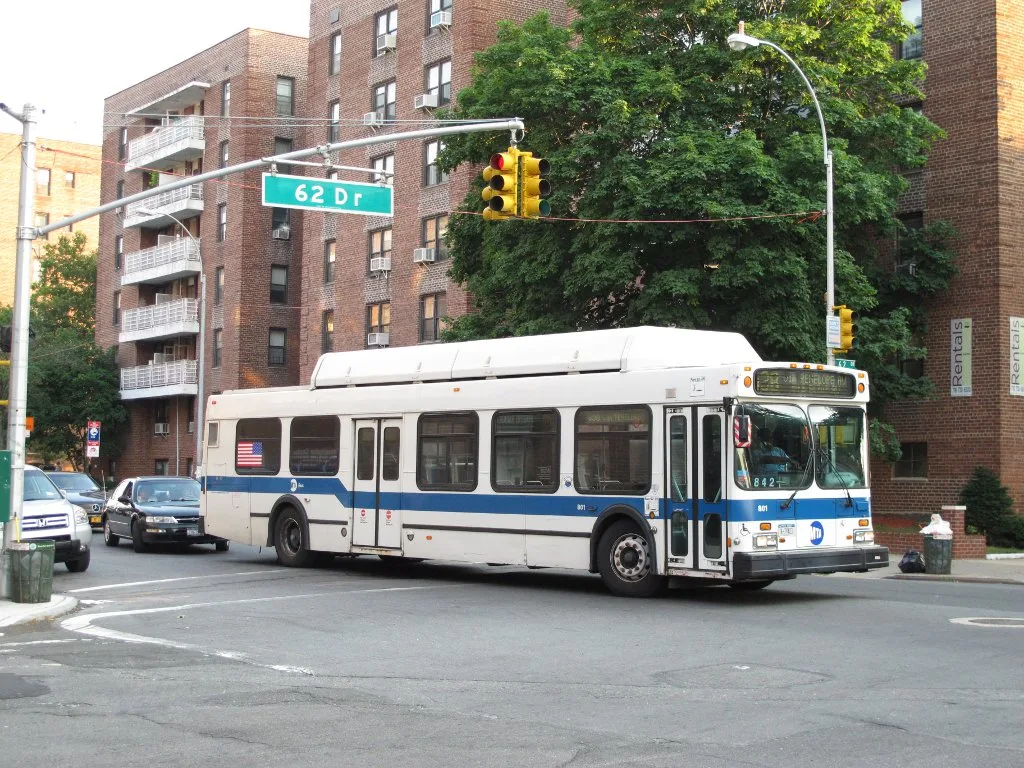Navigating a city like Columbus can be a challenging experience, especially for first-time visitors. Thankfully, the Central Ohio Transit Authority (COTA) Bus serves as a reliable compass to steer you seamlessly around the city. In this comprehensive guide, we simplify the COTA Bus routes for you, demonstrating how easy and cost-effective public transportation in the pulsating heart of Ohio can be.
So buckle up and prepare for an enlightening journey through the roads less traveled, using your ticket to discover Columbus via its extensive network of COTA Buses. Whether you’re a seasoned commuter or a wide-eyed newcomer – we’ve got you covered.
There are over 50 COTA bus routes in Columbus, Ohio, serving various parts of the city including downtown, suburbs, and surrounding areas. Some popular bus routes include the #2 – High Street, the #5 – West 5th Avenue, and the #7 – Mount Vernon Avenue. These routes, along with many others, provide convenient transportation options for residents and visitors alike.
Table of Contents
Understanding COTA Bus System

The Central Ohio Transit Authority (COTA) plays a crucial role in providing public transportation services in Columbus. Understanding the COTA bus system is essential for navigating the city efficiently and making the most of this convenient mode of transportation. Let’s dive into the key aspects that will help you grasp the ins and outs of the COTA bus system.
First, it’s important to familiarize yourself with the different types of buses operated by COTA. The fleet includes standard buses, articulated buses (longer buses with a flexible joint), and express buses, offering various seating capacities and amenities. Each type serves different routes and purposes, catering to diverse commuting needs.
Another key factor to consider is the fare structure within the COTA bus system. Fares can be paid using cash or through the use of electronic payment options such as mobile apps or reloadable smart cards. Additionally, it’s worth noting that discounted fares may be available for certain groups such as students, seniors, or individuals with disabilities.Now let’s move on to exploring the bus routes and frequencies offered by COTA.
● As of 2023, the Central Ohio Transit Authority (COTA) operates over 50 different bus lines, serving an urban population that has surged past the 1.2 million mark.
● Some of their most frequented bus routes include the #2 – High street, #5 – West 5th avenue, and #7 – Mount Vernon Avenue.
● In line with its aim to provide improved connectivity and transmission frequency, COTA recently launched a redesigned network layout that caters to growing areas within Columbus city, thereby expanding its reach and ease of accessibility.
Bus Routes and Frequencies

COTA operates a comprehensive network of bus routes throughout Columbus and its surrounding areas. These routes are designed to connect neighborhoods, business districts, educational institutions, and other key destinations. By strategically planning their service, COTA aims to provide reliable transportation options for residents and visitors alike.
The various bus routes are identified by numbers or letters, making it easier to identify specific lines. Each route has designated stops along its path where passengers can board or disembark from the bus. It’s important to consult the official COTA website or use their mobile app to access up-to-date schedules and plan your trips accordingly.
For instance, if you’re a student living near The Ohio State University campus and need to commute downtown for an internship, you might want to utilize Route 2 – North High Street. This route runs at regular intervalsduring weekdays and connects the university area to downtown Columbus, making it a convenient option for your daily commute.Bus frequencies vary depending on the time of day and the specific route. During peak hours, buses may run more frequently to accommodate higher demand, while off-peak hours or weekends might have fewer trips. Understanding the frequency of a particular route can help you plan your travel arrangements and ensure you don’t miss a bus.
Another valuable resource provided by COTA is their real-time bus tracker, available through their mobile app or website. This allows you to check the estimated arrival times of buses at specific stops, helping you better manage your time and avoid unnecessary waiting.Now that we have a grasp of understanding the COTA bus system in general and its routes and frequencies specifically, let’s explore another crucial aspect of this public transportation service: the accessibility features and services offered.
See Related: Bringing Dogs on MTA Buses: Guidelines and Regulations
Accessibility Features and Services

COTA strives to make public transportation accessible to all residents of Columbus, including those with disabilities. They have implemented several features and services to ensure a comfortable and inclusive experience for everyone.
One notable accessibility feature is the presence of wheelchair ramps on all COTA buses. This allows individuals using wheelchairs or mobility aids to easily board and disembark from the bus. Additionally, the buses are equipped with designated seating areas for passengers with disabilities.
For riders who are visually impaired, COTA has installed auditory signals at major stops that announce important information about bus routes and schedules. These signals help individuals navigate the system more effectively and independently.COTA also offers a paratransit service called Mainstream, which provides transportation options for individuals whose disabilities prevent them from using regular fixed-route buses.
This service operates within the same general area as COTA’s regular routes, providing a convenient alternative for disabled passengers. To further enhance accessibility, COTA has made efforts to ensure that their website and mobile app are user-friendly for individuals with disabilities.
These digital platforms provide real-time bus tracking information, route planning assistance, and other helpful features to facilitate a seamless travel experience.It’s worth noting that if you have specific accessibility needs or require assistance while using COTA services, it is advisable to contact their customer service in advance. They will be able to provide tailored guidance and support based on your unique requirements.
See Related: The Ultimate Guide to Mexican Bus Lines: Routes, Schedules, and Fares
Navigating COTA: Stops and Boarding

When it comes to navigating COTA bus routes, understanding how stops work and knowing the proper boarding procedures is crucial for a smooth journey. COTA operates over 50 bus lines throughout Columbus, covering various parts of the city and its suburbs. Each bus route has designated stops along its path, which are marked by signs displaying the route number and names of major destinations served by that particular route.
When waiting at a stop, it’s important to pay attention to the route number, which is usually prominently displayed on the front and sides of the bus. As a precaution, it is recommended to arrive at the stop a few minutes before the scheduled arrival time of your desired bus.
To ensure that passengers can board safely and efficiently, COTA buses employ a front-door boarding policy, meaning all passengers enter through the front door. It’s polite to allow others to exit first before boarding. If you have any accessibility needs or require assistance, COTA drivers are trained to provide support.
Once onboard, you can use COTA’s mobile app or consult the posted route maps and destination signs inside the bus to stay updated on upcoming stops and major intersections. This will help you accurately track your progress and anticipate when your desired stop is approaching.
It’s worth mentioning that each COTA bus has a unique number or identifier displayed near the front window, which can be helpful for identifying the correct bus if there are multiple buses at a stop. When nearing your destination, simply signal the driver by pressing one of the stop request buttons located throughout the bus.
This alerts them that you would like to disembark at the next available stop. After exiting through the front door, ensure you move away from the curb to allow departing passengers space. For example, let’s imagine you need to travel from downtown Columbus to Ohio State University using COTA. You would locate a bus stop along High Street with a sign displaying both Route ####2 – High Street and Route ####18 – Kenny Road/OSU Hospital as part of its destinations. Once aboard, you would track your progress on the map or through notifications from the mobile app until reaching your desired destination near OSU campus.
Key Locations and How to Get There
When it comes to navigating Columbus using the COTA bus routes, knowing key locations and how to get there can greatly enhance your travel experience. Whether you’re a local resident or a visitor, understanding the routes that connect to important destinations can save you time and make your journey more convenient.Let’s start with downtown Columbus. If you’re looking to explore the vibrant city center, several bus routes serve this area.
For example, Route 1 runs along North High Street and serves popular destinations like the Ohio Statehouse and Greater Columbus Convention Center. Meanwhile, Route 2 travels along Neil Avenue and offers access to attractions like Nationwide Arena and the Short North Arts District.If you’re interested in visiting The Ohio State University campus, Route 18 is the one to take. This route provides easy access to various university facilities, including the Ohio Stadium and Thompson Library.
Additionally, Routes 7 and 8 take you to Easton Town Center, a bustling shopping destination filled with retail stores, eateries, and entertainment options.Another key location served by COTA is the Port Columbus International Airport. Both Route 21 and AirConnect services provide transportation to and from the airport terminals, making it convenient for travelers.Imagine you’re a tourist in Columbus who wants to visit COSI Science Museum. To reach this popular attraction located on West Broad Street, you can hop on either Route 3 or Route 4. These routes will drop you off near COSI so that you can enjoy a day of interactive exhibits and educational experiences.
No matter where your desired destination lies in Columbus, there is likely a COTA bus route that can take you there. Familiarize yourself with the different routes serving key locations ahead of time so that you can plan your trips efficiently.Now that we know how to get to key locations in Columbus using COTA bus routes let’s dive into the practical aspects of using COTA for your transportation needs.
Practical Aspects of Using COTA

Using COTA for public transportation in Columbus offers several practical benefits that make it an efficient and convenient choice for getting around the city. Here are some important aspects to keep in mind:
Extensive Route Network:
COTA covers a wide service area, serving not only central Columbus but also the surrounding suburbs. With over 50 routes to choose from, you can easily find connections to various parts of the city, including key destinations like downtown, universities, shopping centers, and entertainment venues.
Real-Time Bus Tracking:
COTA provides real-time bus tracking through their website and mobile app. This feature allows you to plan your trips effectively by knowing when your bus will arrive at your stop. You can also receive notifications about delays or changes in service, ensuring that you stay updated during your journey.
Fare Payment Options:
COTA offers multiple fare payment options to suit different needs. You can pay with cash when boarding the bus or purchase a reloadable smart card called the COTA Connector Pass. Additionally, the EZFare mobile app enables you to purchase and display tickets directly on your smartphone, eliminating the need for physical cards or cash.
Accessibility Features:
COTA is committed to providing accessible transportation services for all riders. They offer ramps and kneeling features on buses for easy boarding and disembarking. Buses are also equipped with priority seating for individuals with disabilities or mobility challenges. If you require additional assistance or accommodations, COTA is ready to support you upon request.Now that we’re aware of the practical aspects of using COTA, let’s explore the various types of bus passes available and how you can purchase them.
See Related: How to Play Ride the Bus [Step-by-Step Guide]
Types of Bus Passes and How to Purchase

When utilizing the COTA bus system, understanding the different types of bus passes available can greatly enhance your experience. COTA offers various pass options to suit different needs, making it convenient for frequent travelers and occasional riders alike. Let’s explore some of the common types of bus passes that can be purchased along with the methods available.
####1 – Day Pass: If you plan to use the bus system extensively for a single day, the Day Pass is an excellent option. It allows unlimited rides on all COTA routes throughout the day. This pass is ideal for exploring multiple destinations in Columbus or running errands without having to worry about purchasing individual fare for each trip.
Picture this – you wake up early in the morning, ready to explore the vibrant city of Columbus. With a Day Pass in hand, you hop on and off buses as you navigate through popular tourist spots, visit museums, try local cuisine, and embrace the culture. The convenience of unlimited rides enables you to fully immerse yourself in all that Columbus has to offer.
####2 – Monthly Pass: For regular commuters or individuals who frequently rely on public transportation, a Monthly Pass may be the most cost-effective option. With this pass, you can enjoy unlimited rides on all COTA routes for an entire month. It provides flexibility and long-term savings by eliminating the need to purchase individual fares daily. Purchasing these passes is a straightforward process that offers flexibility based on convenience and personal preferences:
Customer Experience Centers: Visit one of COTA’s Customer Experience Centers conveniently located throughout Columbus to purchase your bus pass in person. The friendly staff will assist you in selecting the right pass for your needs.
Ticket Vending Machines: Many major transit centers have ticket vending machines where you can quickly and easily purchase your desired pass using cash, credit card, or a COTA-specific smart card.
Retail Locations: With up to 400 retail locations scattered throughout the city, you can also purchase and add funds to your bus pass account at authorized retailers. This option offers additional convenience as you can combine your pass purchase with other shopping errands.Now that we have explored the types of bus passes available and how to purchase them, let’s dive into the range of services that COTA provides beyond buses.
Beyond Buses: Other COTA Services
While COTA is widely recognized for its comprehensive bus network in Columbus, it goes above and beyond by offering additional services that cater to various transportation needs. Let’s explore some of these services:
####1 – C-pass Program: If you are an eligible worker who works downtown, the C-pass program provides free transportation. It is a partnership between COTA, the Mid-Ohio Regional Planning Commission, and downtown property owners. The C-pass allows eligible employees to use it any day, any time, on any route within the designated period. Keep in mind that only the eligible employee can utilize the C-pass; family members cannot ride along with it.
####2 – Emergency Ride Home Program: To ensure commuters have a safety net during emergencies or unexpected overtime situations, COTA offers an Emergency Ride Home program. This service provides a free emergency ride home for qualified participants when other transportation options are unavailable. It offers peace of mind knowing that in unforeseen circumstances, there is a reliable means of getting home safely.
These additional services provided by COTA demonstrate their commitment to meeting diverse transportation needs within the community. Whether through free transportation programs for downtown workers or providing emergency support, COTA aims to enhance mobility and accessibility beyond traditional bus services.
Related Resources:
